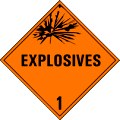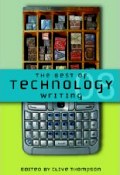 Sciencebase readers following the melamine story and concerned about melamine contaminated foods, will hopefully be interested in the latest expert opinion on the scandal.
Sciencebase readers following the melamine story and concerned about melamine contaminated foods, will hopefully be interested in the latest expert opinion on the scandal.
Roberta Weiss, a nephrologist (kidney doctor) emailed to provide Sciencebase readers with some more background on melamine contamination and toxicity. Weiss suggests that, “Probably acute renal failure resulting from cyanuric acid crystal formation in the kidneys of babies that ingested the melamine contaminated formula was responsible for the infant deaths, not kidney stone formation.”
Weiss is a kidney doctor for adults, but emphasises that she has never seen a case of melamine related kidney or bladder stones. However, there have been animal studies carried out since the 1980s that do demonstrate that the ingestion of melamine by mice can cause bladder stones, known technically as urolitiasis. These are apparently associated with ulcerations in the bladder. Weiss adds that the animal food tainted with melamine that killed so many pets in the US contained products in the feed from China.
As I’ve mentioned here before, melamine is an organic compound used in the manufacture of plastics and fertilizers. It releases cyanide when burned and has been associated with cyanide poisoning in industrial accidents. Melamine monomer, as opposed to the plastic used to make kitchen utensils and table coverings, itself also has irritant properties. It has been added to various food products to illicitly and fraudulently boost the measured protein content without the expense of actually improving the food’s nutritional value.
According to The Register, Chinese company, Xuzhou Anying, was advertising “dust of melamine” as something it called “ESB protein powder” on the global market trading website, Alibaba. “The latest product, ESB protein powder, which is researched and developed by Xuzhou Anying Biologic Technology Development Co., Ltd… Contains protein 160 – 300 percent, which solves the problem for shortage of protein resource,” it boasted. A horrifying thought, makes you wonder what is actually in those nasty protein powder drinks bodybuilders use.
“Melamine ingestion results in the production of cyanuric acid in the kidneys,” adds Weiss, “which results in intratubular crystal formation and acute renal failure.” This, she explains occurred in cats who were fed melamine in combination with cyanuric acid experimentally after the pet food issues to demonstrate what may have been happening during that incident.
According to Economics And Finance (Cai Jing) magazine, as reported in the Epoch Times, it is common practice to add melamine to livestock feed along with sodium nitrite, urea, ammonia, silica, potassium nitrate, sodium nitrite, glacial acetic acid, activated carbon materials, urea, ammonia, potassium nitrate, to improve its nutritional profile and other properties of the feed. The use of melamine in this context contravenes international regulations where they exist.
The UN Food and Agriculture Organization (FAO) points out that, “Regulation regarding its use in animal feed do not always exist as it is only recent events which indicated the need to regulate for this substance. However, some countries have established regulations and do not permit the use of melamine in animal feed.” Indeed, the FAO specifically states: “Melamine is not permitted in food or feed stuffs.”
Nevertheless, the FAO says, melamine is often used in agricultural fertilisers. But, has also warned that the commonly used pesticide cyromazine can break down to form melamine (PDF document). This might also explain why melamine has been found in lettuce, water cress, tomatoes, mushrooms, potatoes and other agricultural products in China. Contamination levels are very low at 17 milligrams of melamine per kilogram of mushrooms, for instance. They are notably low compared to the levels of melamine found in contaminated infant formula milk, which were as high as 2560 milligrams per kilogram of ready-to-eat product. The levels of cyanuric acid in these products is unknown.
Sciencebase regular “Offy” pointed me to the North Korean publication The Daily NK, which asks whether there were melamine deaths in 2005. “According to merchants trading between China and North Korea, the Chinese Melamine-tainted milk affair started in Pyongyang in the summer of 2005. At the time, infants who ate imported Chinese powdered milk fell unconscious and, in more serious cases, died.” At the time, the North Korean authorities tested imported Chinese milk and banned it on the basis of their findings.
Because of the pet food problem, pet owners like Offy, have been following this stayed on this for well over a year. “Politics has trumped health in favour of industry for a very long time in the US…it’s not just a problem in China,” she says. Cai Jing blames a lack of supervision for the melamine crisis and suggests an approach that will allow China’s fledgling market economy to continue to grow but at the same time minimising the chances of a similar scandal occurring again. It says that the melamine milk crisis has taught China that government oversight to spot corruption is essential, but it also suggests that the government not be allowed to simply meddle with the market. This would, Cai Jing says, be the only way to ensure a safe food industry.
- Why is melamine in baby formula, your food — and your pets’ meals?
- Major Chinese supermarket chain in Canada pulls yogurt drinks from shelves
- T&T; Supermarkets pulls yogurt drinks from shelves
- China: 12 more arrests in tainted milk case
 In environmental news, recent insights into dust from the Sahara could improve our understanding of climate change. Finally, dust of another kind is being used in an entirely different way, by British researchers to protect a new type of thermometer used to measure the 3000 Kelvin temperatures of an explosion.
In environmental news, recent insights into dust from the Sahara could improve our understanding of climate change. Finally, dust of another kind is being used in an entirely different way, by British researchers to protect a new type of thermometer used to measure the 3000 Kelvin temperatures of an explosion. The day after yet more melamine in food warnings, this time in Bangladesh where
The day after yet more melamine in food warnings, this time in Bangladesh where  Once again, I have a stack of great books sitting on the Sciencebase desk ready for review.
Once again, I have a stack of great books sitting on the Sciencebase desk ready for review.
 The latest issue of my SpectroscopyNOW column is now online. In this issue, having sampled a little
The latest issue of my SpectroscopyNOW column is now online. In this issue, having sampled a little  Sciencebase readers following the
Sciencebase readers following the